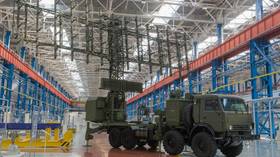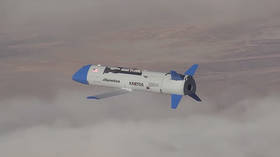‘Missile hunters’: Russian military to have TWICE AS MANY radars able to spot stealthy hypersonic projectiles in Arctic

Moscow apparently plans to boost the number of state-of-the-art radars – designed to locate even the stealthiest flying targets – it has in the Arctic. The deployment will "significantly” increase Russia’s defense capabilities.
Citing military industry sources, TASS reports that the country’s General Staff is poised to deploy five more Resonance-N radars “capable of detecting hypersonic targets – in addition to the five already ordered.”
Once all online, the radars will shield the entire Russian Arctic from incoming “hypersonic devices,” the source said.
Also on rt.com Kinzhal hypersonic and Kalibr cruise missiles fired during massive Russian Navy drills in the Black Sea (VIDEOS)Such a deployment would “significantly increase the surveillance capabilities of the Russian armed forces,” Mikhail Khodarenok, a retired colonel in the Air Defense Forces and former General Staff officer, told RT.
The station must have worked well in practice. After all, the Russian Defense Ministry rarely decides to double an equipment order.
“A particularly valuable quality of Resonance is the ability to detect hypersonic cruise missiles,” he explained. The cutting-edge phased-array radar can spot and track low-observable targets at 600km as well as ballistic missiles flying 1,200km away at an altitude of 100km, the military expert told RT.
Back in the Cold War, the Soviet Union had an “extensive radar surveillance system” in the north, since its military considered the region the most likely direction for a missile attack by the US, according to Khodarenok.
“Now, this goal should be achieved through fewer but more sophisticated [radars].”
Also on rt.com ‘Today THEY are trying to catch up’: Putin says Russia surpasses all competitors in advanced weapons for the first timeEarlier this year, President Vladimir Putin stated that Russia is spending far less on defense and using its money more efficiently by developing a series of advanced weapons that its rivals are struggling to copy.
He added that, while the Soviet Union was always trying to catch up to the US – whether it was the atomic bomb, long-range bombers or the first intercontinental missiles – things seem to have changed.
“Today, we have a unique situation in our new and recent history – they are trying to catch up with us,” he announced.
Russia has rolled out an array of state-of-the-art hypersonic weapons over the past year, with some already having entered service, including a hypersonic glider named ‘Avangard’.
Think your friends would be interested? Share this story!













